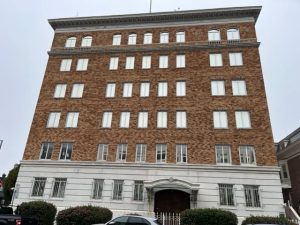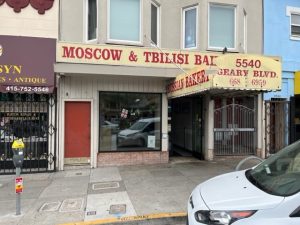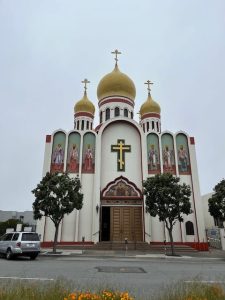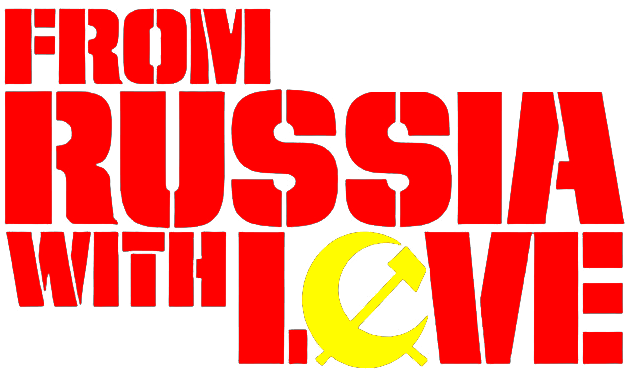 The charm and beauty of San Franciso are the distinct neighborhoods dispersed throughout its entire 49 square miles. These neighborhoods can change demographically throughout the decades. One district though, still claims the legacy that grew during the early 19 th century. The Richmond District has retained an enduring and long-standing enclave of people with Russian nationality and heritage. As time has passed, the Russian influence remains in the neighborhood and among locals the area is often referred to as “Little Russia*.”
The charm and beauty of San Franciso are the distinct neighborhoods dispersed throughout its entire 49 square miles. These neighborhoods can change demographically throughout the decades. One district though, still claims the legacy that grew during the early 19 th century. The Richmond District has retained an enduring and long-standing enclave of people with Russian nationality and heritage. As time has passed, the Russian influence remains in the neighborhood and among locals the area is often referred to as “Little Russia*.”
Most of us would assume that the center of Russian activity in The City would be the popular Russian Hill neighborhood. But the book, Russian San Francisco, explains that this area was a burial site for Russian sailors in pre-Gold Rush times. The iconic name of the neighborhood has never changed.
 Russian immigration to The City can be traced through these events: the Gold Rush, employees and their families migrating down the California coast from Fort Ross, and waves of Russian Jews fleeing persecution. The people fleeing persecution began in the late 18 th century and the most recent wave coming in the mid 1980’s (this would have been the time when the Soviet Union dissolved).
Russian immigration to The City can be traced through these events: the Gold Rush, employees and their families migrating down the California coast from Fort Ross, and waves of Russian Jews fleeing persecution. The people fleeing persecution began in the late 18 th century and the most recent wave coming in the mid 1980’s (this would have been the time when the Soviet Union dissolved).
The original Russian enclave in S. F. was not the Richmond, but actually the Fillmore district. This may be because of the proximity to the oldest Orthodox church in S. F. on Green Street. The development of the cheap new housing in the Western neighborhoods (Sunset and Richmond) drew Russian-speakers to resettle there. This population movement gave The City the first corridor of Russian culture in and around the Richmond. According to a San Francisco Department of Public Health survey, by the end of the century 60 percent of Russian-speaking San Franciscans lived in the Western neighborhoods, but primarily the Richmond.

Sadly, the events playing out in Ukraine (2022- ) are negatively affecting the businesses of Little Russia.
Editorial note: The contentious relations between the United States and the Soviet Union (Russia) have been ongoing since the end of World War 2. More specifically, since the Cold War began. In reality, these tensions and conflicts have been geopolitical. The powers to be in each country have created and fueled the rivalry for their own political and jingoistic gains. These waves of nationalism were forced upon both countries citizens through propaganda. As a result, people from each country developed a mistrust for each other. This was evident in San Francisco. Mary Ellen Kositzin told her family numerous times of the verbal harassment she endured. She was employed with the Pacific Bell company in the Financial District in The City, as an Administrative Assistant. She would come home in the evening, after work, complaining about how fellow employees would “tease” her about “becoming a communist” since she married a Russian. Eventually, in an attempt to silence their comment’s she said yes she was.
 Think about some of the events and propaganda U.S. citizens absorbed over the decades:
Think about some of the events and propaganda U.S. citizens absorbed over the decades:
- The worldwide media coverage of how competitive events and games would be between the U.S. and Soviet athletes during the Olympics. Each country preached it was good vs. evil. More specifically, in 1972 the Gold Medal basketball game between the U.S. and Russia ended with a controversial call made by the head of the Olympic Basketball Committee. To this day, the players from that U.S. team have never accepted their Silver medals. The medals are locked up in an Olympic office in Switzerland. Americans refuse silver as USSR steal controversial basketball final – Olympic News (olympics.com)
- The American movie industry portrayed Russia as cold, dreary, snowy and depressing. People who were sneaky and untrustworthy. Away from the Winter time, Russia is a gorgeous flourishing country. Quite the opposite of what American movies attempted to portray. And most of the Russian people are similar to the majority of Americans. We share the same experiences in daily and family life. An abridged list of movies depicting Russia and Russians with a negative connotation:
- War and Peace (1956)
- The Brothers Karamazov (1958)
- Firefox (1982)
- Gorky Park (1983)
- Rocky IV (1985)
- White Nights (1985)
- Thirteen Days (2000)
*’The Front Steps’: How “Little Russia” Came To the Richmond: June 9, 2022
